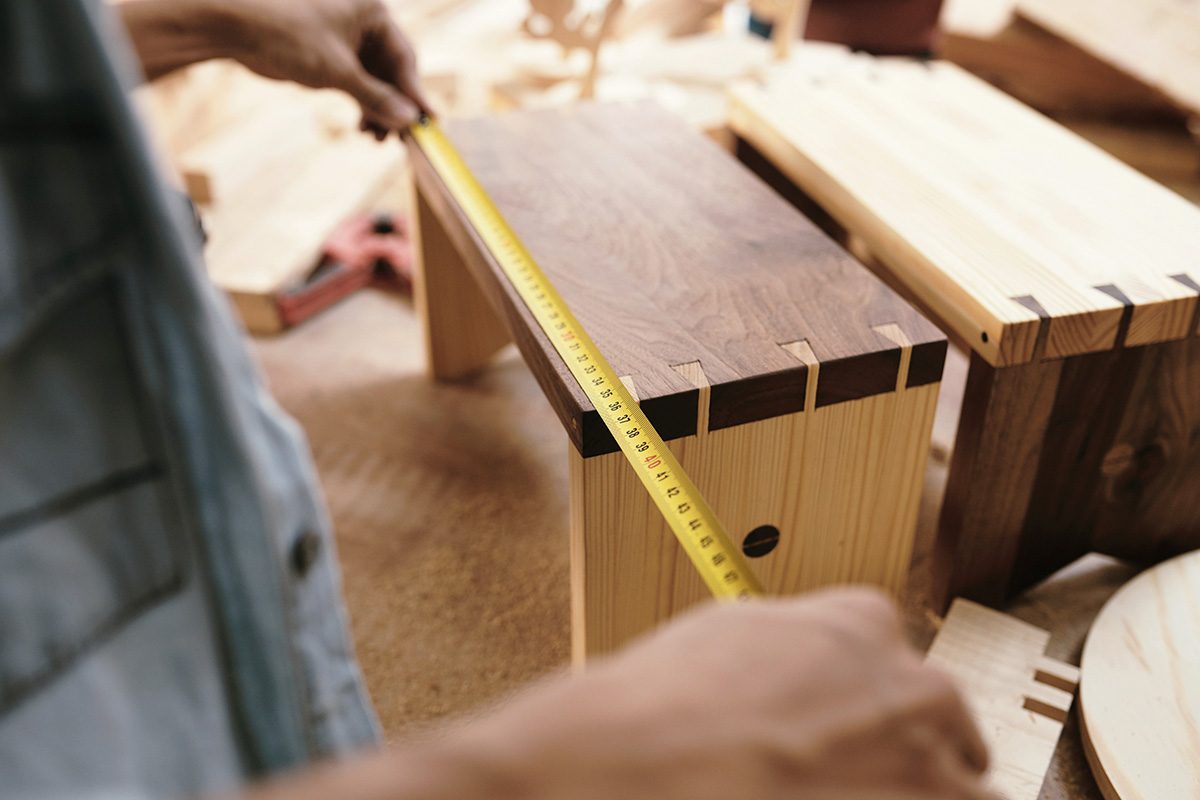When it comes to finishing cabinets, whether it be with stain, paint, urethane, oil or another product, it can be simple and fun. Applying a finish to cabinets does not require all types of experience or tools either, just a few techniques and tricks to assist with achieving the factory finish look you want. The great discounts you can get from purchasing unfinished cabinetry provides enough reason to do the finishing on your own. If you prefer staining or painting, or simply varnishing an unfinished cabinet, below are basic things that you should know prior to starting to achieve a perfect finish.
Surface Preparation and Sanding
One of the largest mistakes those new to finishing make, is lack of preparation for the cabinet surface, followed by neglecting the sanding process between finishing coats. With unfinished wall cabinets or base cabinets, manufactures handle the majority of sanding. Although, another light sand using a fine grit sandpaper should be done. You should use at most a 200-grit sandpaper, but a 400 grit is best for achieving a smooth finish.
When sanding, there are two main factors to remember. First, you should always sand towards the grain. The second, apply gentle pressure to avoid damaging veneer. This means avoid using power sanders, as the back and forth, rotation motions will result in scratches in the wood grain.
Between coats, the sanding is more significant that an initial sanding. The reason for this is, bubbles occur when applying the finish caused by tiny debris and dust particles adhering to the cabinet surface. This leaves coats with an unwanted rough texture. Using a soft motion with 400 girt sandpaper, or a steel wool will open these bubbles to prevent the rough texture.
Remember, Less Is More
When working with finishing techniques, a key factor to remember is that, less is more. When applying the initial coat or two, you may think of applying a thicker coat, but this is bad. Doing this will result in the finish soaking in the wood, providing a very patchy appearance. Although, finishing coats come with a set of common problems:
- A heavy finish often produces more bubbles compared to thin coats.
- Thicker coats will take much longer to dry between applications, meaning extended exposure to dust and debris.
- A thicker coat will drip, run, or have more flaws.
When you’re trying for a perfect glossy urethane or paint finish, aim for a three to five coat application instead of two thicker coats.
Which Tools are Best?
A great thing about cabinet finishing, is that no complex or expensive tools are required. The basics you will need include cloths, brushes, sandpaper, and rags for cleaning up messes. When using water based finishes, you will need water, and mineral spirits or paint thinner for an oil based finish.
Determining the best brush to use, and when to use cloths? Below are the best methods for applying finishes:
- For stains, use a cloth for applying. Traditional stains are thin and runny, meaning an even coat will be difficult to get with a brush. A gel stain will be too thick for applying with a brush, as it causes the stain to be pushed instead of rubbed into the grain.
- Polyurethane, urethane, varnish or other oil based clear coats may be applied using a cloth or brush. Although, cloths are often the preferred approach as it allows for a thinner and even coat.
- For oil and latex paint, use a brush. Soft brushes are better for thin latex paints, while oil paints do best with stiffer brushes.
- Oils, such as tung oil or teak oil need to be applied with a cloth, as these are rather thin.
- Unless using paint, a clean lint free cloth is often best for applications. Old t-shirts or cheesecloths work well. When going old t-shirt routes, cut them into pieces and make multiple rags, place them in a washing machine and remove any fuzzy particles. This could take two or more washes.
Benefit Of DIY Cabinet Finishing
By finishing cabinets on your own, you not only save money, you create memories, and its simple to do. These techniques and tips can provide the perfect showroom appearance to your cabinets, no matter the desired finish. Now, you can snag a great deal the next time you find an unfinished kitchen cabinet without hesitating. Don’t be afraid to try DIY finishing your cabinet doors or drawer boxes!





